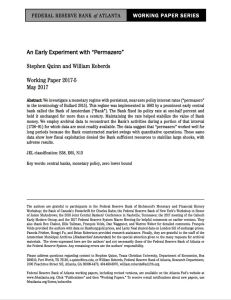Join getAbstract to access the summary!

Join getAbstract to access the summary!
Stephen Quinn and William Roberds
An Early Experiment with “Permazero”
Federal Reserve Bank of Atlanta, 2017
What's inside?
Unconventional monetary policies have a long history – dating back at least as far as 1683.
Recommendation
You might think that measures such as quantitative easing and zero interest rate policies are modern solutions, but even in central banking, there is truly nothing new under the sun. Economists Stephen Quinn and William Roberds delve into how the Bank of Amsterdam, starting in 1683, maintained a near-zero interest rate for more than 100 years. getAbstract suggests this intriguing account, despite its somewhat labored presentation, to bankers, economists and investors for the historical perspective it offers in the debate on present-day monetary policies.
Summary
About the Authors
Stephen Quinn is an associate professor of economics at Texas Christian University. William Roberds is a research economist with the Federal Reserve Bank of Atlanta.



















Comment on this summary